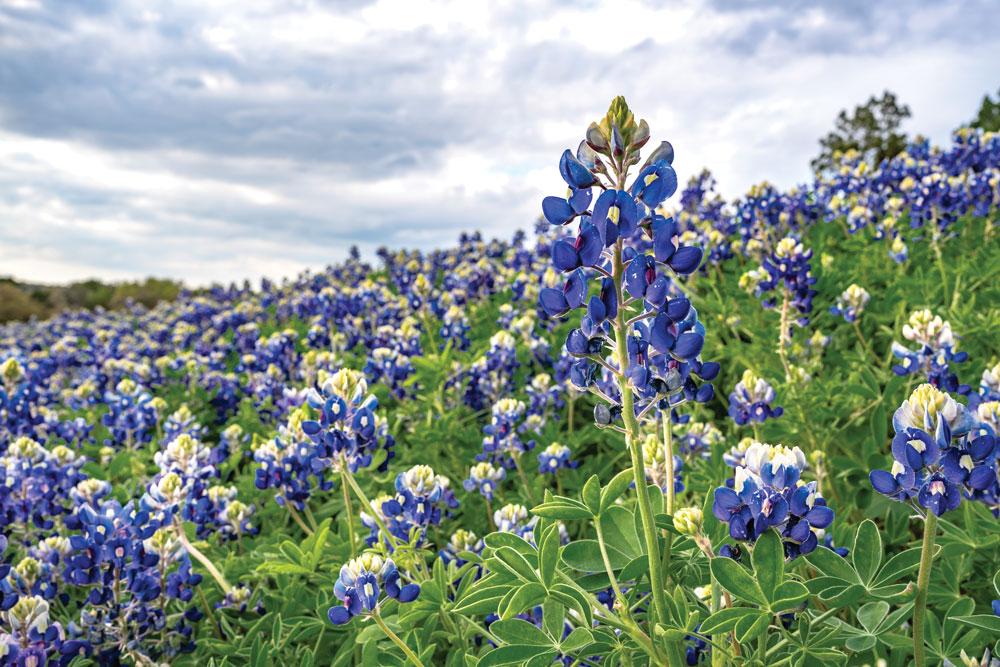Fall is in the air — that time of year when thoughts turn to raking leaves, shorter days, ripe pumpkins, and … wildflowers. That’s right. Fall — from September through early December — is the ideal time to plant wildflower seeds for bountiful spring blooms. Here’s what to do (or not do) now to reap beautiful benefits later.
PLANT SEEDS
- Lightly rake your seed bed to remove leaf debris and weeds. The perfect spot for wildflowers has well-draining soil, gets plenty of sunlight, and is somewhat free of weeds.
- Scatter seeds, ensuring they have direct contact with the soil.
- Walk over the seeded area to press the seeds down. It’s OK if some seeds remain visible.
- Lightly water and, if rain is scarce, continue to lightly water for about four weeks to start the germination process.
- Once sown, nature takes over. Fertilizing is not necessary for wildflowers, and, in fact, fertilizing established wildflowers results in more foliage and fewer flowers.
WHAT HAPPENS NEXT
Seeds begin to germinate, rapidly absorbing water and swelling. The seed coat softens and enzymes become active. The seed coat then splits, and a tiny root called a radicle emerges to take in nourishment.
A shoot, or plumule, grows upward in search of sunlight. Cells become metabolically active and start growing.
THE WRONG WAY TO PLANT
Yes, this simple process can go wrong IF you:
- plant at the wrong time of year
- plant the seeds too deeply
- plant in an area that doesn’t get enough sunlight
- over till the soil prior to planting, which can bring up dormant weed seeds
- over water, depriving the seed of oxygen
- plant in a weedy area that will choke out the wildflowers
- plant in soil that does not drain well
WILDLIFE FAVORITES
Wildflowers are essential feed for a variety of insects and birds. A few butterfly favorites to consider planting are purple coneflower, Gregg’s mist flower, Indian blanket, and milkweed. Hummingbirds like Indian paintbrush and horsemint. Bees go bananas over bluebonnets. You really cannot go wrong with any native Texas wildflowers as they are all simply spectacular.
jgreenwell@thepicayune.com

